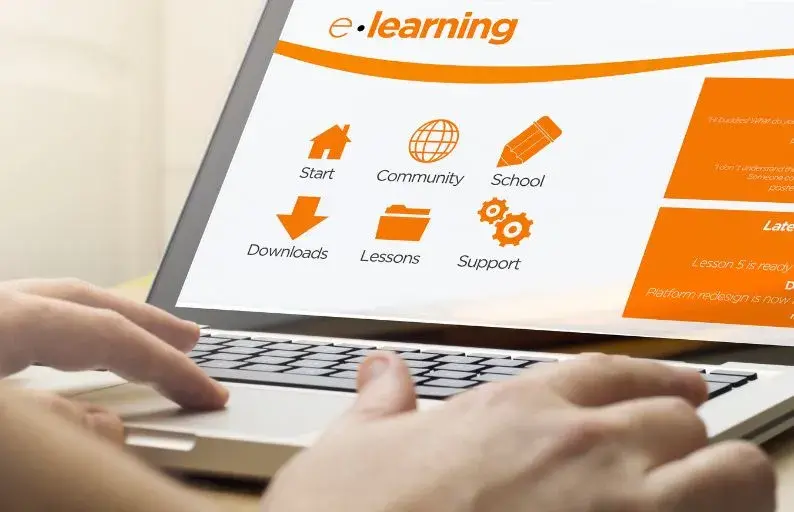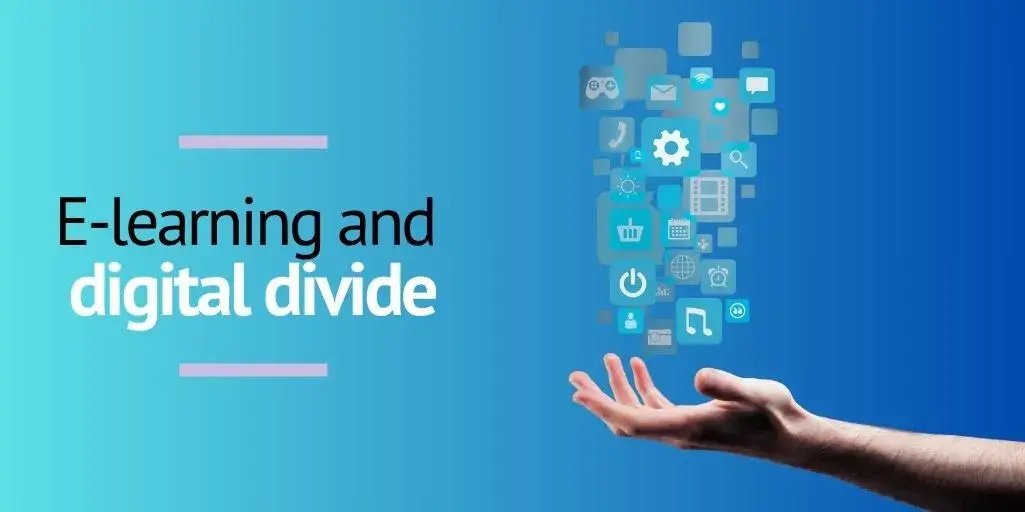The digital divide is something that continues to affect a large part of society and ther is a lot of digital inequality. But what is the digital divide meaning? The digital divide refers to differences in access, use and knowledge of digital technologies. Whether it is a matter of generation, location or resources, this divide creates huge inequalities in the population.
As technology advances, new ways to address this problem and make technology more accessible to all are also emerging. The impact of elearning and e-learning platforms have proven to have many advantages of online learning and to be great allies in implementing measures to bridge the digital divide and bring the technological world closer to the people, as well as distance education.
Although these platforms have great potential, they are not a one-size-fits-all solution; there are also other challenges that need to be overcome to achieve full e-inclusion, especially in the corporate sector.
In this blog we will look at some of elearning advantages, on technological inclusion, on the impact online learning and online learning resources for students.
How does eLearning help to bridge the digital divide?

E-learning has become a key tool in reducing technological inequalities and improving skills in the workplace.
LMS platforms make it possible to offer accessible, flexible and adaptable training for different needs, which is essential when building strategies to reduce the digital divide. These online training platforms contribute by facilitating access to quality education elearning, improving digital skills and providing greater flexibility and integration with other devices. Let’s see what the advantages of online learning are!
Accessibility to education in remote areas
One of the great advantages of elearning platforms is the possibility of bringing education to any place in the world that has an internet connection, however remote it may be.
In many remote rural areas or communities with few educational resources have a lot of digital inequality, and access to an educational institution is complex or virtually non-existent, so many people do not have the opportunity to learn unless they do so virtually. This reflects the fact that there is a huge digital divide in technology.
This is especially valuable when it comes to corporate training, as it is increasingly common to find companies with employees working remotely from different locations and who use online learning platforms for business.
An online LMS allows all employees to access the same content wherever they are, and it is accessible 24 hours a day, so time differences are not a barrier in this respect either.
In addition, some platforms allow content to be downloaded so that it can be accessed without the need for an internet connection, perfect for areas with unstable connectivity.
Democratisation of content

Before the advent of online courses, quality training was reserved for those who could afford the cost of accessing courses provided by major institutions and schools.
Now, e-learning platforms have changed this reality, offering low-cost or even free online courses that allow more people to access quality, comprehensive training. For example, prestigious universities such as MIT or Harvard offer their courses for free and openly so that everyone has the opportunity to train in any area at no cost, from finance to data analysis.
Improving digital skills
Nowadays, the mastery of digital tools is essential, both in the personal and professional spheres. LMS platforms play an important role in improving these digital skills, especially for those with less technological experience and the technological inclusion.
These platforms help to bridge this gap by offering training tailored to different levels of technological literacy and digital literacy programmes. These programmes are courses specifically designed to teach basic digital skills, such as using a browser, sending emails or making a video call, to those with less experience.
In companies where continuous training is common, elearning platforms are often used to train and keep employees up to date on specific new technologies and software.
More flexibility
For some people, attending face-to-face classes is not an option. Either because they don’t have enough time, because they can’t combine it with their personal and working life, or even because of physical mobility difficulties.
Therefore, another benefits of online learning is that virtual platforms offer the flexibility these people need to learn, with courses available anytime and anywhere. Learners can access the content at a time that suits them, which is ideal especially for those workers who want to learn at their own pace without affecting their work responsibilities, or for those who are caring for children and cannot commit to a fixed schedule.
Integration with mobile devices
With the increasing use of smartphones and tablets, the integration of e-learning platforms with these devices is almost indispensable. Optimising platforms so that courses can be accessed from different devices opens the door to training without the need for a computer.
It allows access to content on the move, taking advantage of journeys on public transport or while travelling. They facilitate immediate access and eliminate barriers such as lack of time or the need for a specific space to study. In addition, some apps send push notifications to devices with reminders to further motivate users.
Challenges and limitations of bridging the digital divide through eLearning

E-learning platforms are a very powerful tool and one of the best solutions to the digital divide, but they are not a unique resource and cannot bridge the digital divide on their own. Although they facilitate access to education and the development of digital skills, they depend on other factors that must go hand in hand.
Without adequate digital infrastructure, training in technological skills and policies that ensure equitable access to online education, virtual education platforms are just another tool that does not dodge the digital divide in technology.
Some of the main challenges and limitations of elearning that must also be addressed to complement distance education and make e-learning an even more powerful solution to bridge this gap are:
Internet access and devices in areas with poor connectivity
One of the biggest challenges is the lack of internet access and connectivity, especially in rural and remote or under-resourced areas. This reflects the fact that the digital divide in rural areas is very wide. So distance learning is more complicated. Without a stable connection or the right devices, e-learning platforms have little to do.
While some allow offline access if content is downloaded, they require some form of internet connection to continue progressing through courses. This is one of the most difficult barriers to break down and one that still affects many people.
Digital skills gap
Without basic digital skills or a prior digital literacy programme, it is difficult for a person with low technical skills to use an e-learning platform fluently for accessibility in online learning.
It may even be inaccessible to some sectors of the population, such as older people who have never used a computer or smartphone, or workers who do not belong to the digital environment.
Limited recognition of online education

In some sectors, online education still does not have the same recognition as traditional training. Some training centres and companies are wary and still see online courses as not having the same value as face-to-face training.
Some companies may consider that an online course does not have the same level of quality as a conventional one, limiting its value in the labour market, as not all online courses have certifications recognised by academic or governmental bodies.
Lack of personalisation in teaching
Another limitation of e-learning if it is not worked properly is the lack of personalisation. In many cases, courses are designed in a standard way, without considering the individual differences and learning styles of each user.
Not all learners start from the same point or have the same pace, so it is important to have the help of a tool that allows content to be adapted and personalised at each stage of learning, responding to the individual needs of each person. One of the technologies that allows the creation of new content, adapted to different patterns, is generative AI, which is increasingly used for education elearning, especially in the corporate sector.
Demotivation and lack of retention
Keeping learners engaged and motivated until the end of the course is another major challenge of online education, as it is a learning process that most learners do individually.
The lack of interaction and support can make them lose motivation more quickly or they may not feel attracted to take an online course because they do not feel a sense of companionship and feel more lonely, opting for face-to-face education.
The impact of elearning and e-learning platforms are a key element on the road to bridging the digital divide, the accessibility in online learning, and digital transformation in education and the world of work, but to be truly effective they must be accompanied by a robust digital ecosystem that is accessible to all.
Adequate digital infrastructure, the implementation of policies that promote equal access to digital education and the improvement of the user experience on LMS platforms will make this online learning modality more accessible, attractive and recognised, becoming an agent of change in bridging the digital divide and with multiple benefits of online learning.
